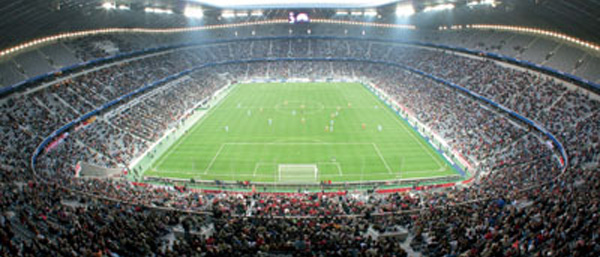Why Paying Attention Pays Off for Olympians

The right type of visual attention instruction can help athletes perform at their best.
(ISNS) -- To succeed in an Olympic team sport, athletes must have superior talent and top-notch understanding of their event. How, then, would players ever overlook open teammates or misinterpret a game situation unfolding in front of them? Sports scientists say that some mistakes in the heat of competition result from a phenomenon termed inattentional blindness.
When something -- or someone -- passes through a person's field of view without being noticed, that's an example of inattentional blindness. Images can go unrecognized if the brain is otherwise occupied.
A striking experiment called "The Invisible Gorilla" demonstrates this phenomenon. Psychologists Daniel Simons and Christopher Chabris asked subjects to watch a video of six people, three in white shirts and three in black shirts, as the members of each "team" passed a basketball to their "teammates." Subjects are told to count the number of passes made by the people in white shirts. Amidst the action, as the teams weave through each other, passing the ball, a person in a gorilla suit casually wanders through the two groups. The gorilla pauses in the center of the frame, beats its chest, then leaves the frame. Shockingly, about half of all viewers never notice the gorilla on first viewing.
Daniel Memmert, a sports psychologist at the German Sports University in Cologne, has collaborated with Simons. He studies the concept of inattentional blindness within sports.
He explained that sports are a "perfect medium" in which to explore how perception and attention work in complex environments. For example, detailed instructions from coaches can sometimes be counterproductive.
"[The players] have other instructions, they have other things in mind, attention-demanding things, so they are totally blind against a totally open player," said Memmert.
Players may see an open player, but if worried about maintaining control of the ball, or something else, they may not see potential passing opportunities developing in front of them.
Coaches notice when players don't perform up to their abilities and search for explanations. Take, for example, a point guard in basketball who seems never to recognize wide open teammates in his peripheral vision.
"I would have coaches coming to me and saying, 'I have this player and they're not noticing things in their side vision … There must be something wrong with his vision,'" said David Mann, an optometrist who now works at Vrije University Amsterdam in the Netherlands.
If the player passed a vision test, the poor performance may have been due to an inattention issue.
"A lot of my work tries to figure out how important is the actual visual side of things," said Mann. "The hardware of the eyes, how important is that, versus how important is the software, the perceptual side or the brain side of things? The more work that I've done, the more it points to the software rather than the hardware."
Memmert's research indicates that the vision of athletes and non-athletes doesn't differ in basic visual skills, but in how they respond to sport-specific skills. In general tests of visual skills, the athletes tend not to perform better. If a test is specific to the athlete's sport, then the results change. Different sports rely on different aspects of the visual system.
"We know that in most of the sports, there are only differences in the horizontal view of attention breadth," said Memmert. "That makes sense, because it's good for a soccer player or a basketball player, or an American football player to have a wide breadth of attention, but they do not differ so much in the vertical dimension."
Memmert added that in some sports activities, such as volleyball and high jump, elite athletes demonstrate better-than-normal ability to pay attention to what they see in the vertical dimension.
When first learning a skill, many people must focus on it intently before becoming accomplished, after which it becomes second nature. Think of the basketball player who can run and dribble the ball effortlessly. But, trying to focus on the well-learned task in order to think it through carefully can backfire.
"If you do actually consciously pay attention to something that you've learnt well, then it sends you backward quickly," said Mann. "You always have guys who in training are brilliant, you put them in a match situation where for some reason they are affected more by the crowd or people watching them or whatever it is and they get that attentional narrowing," said Mann.
Finding a happy medium is important, and coaching can help widen attention to the whole field. The right type of instructions can help athletes perform not only as well as expected, but even better.
"If you give broad instructions, to have a broad focus of attention by the participants, then more creative solutions will emerge," said Memmert. "If you give too [many] instructions, then [athletes] will have a very narrow focus of attention, and they won't produce so much creative solutions."

